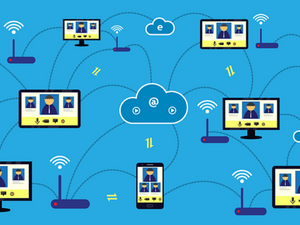
The Internet of Things (IoT) has emerged as a transformative force in the realm of network design, reshaping how we think about connectivity and data management. As IoT devices proliferate, network architects face new challenges and opportunities.
Let’s take a look at the impact of IoT on network design, exploring the shifts in design principles, the challenges posed, and the strategies for creating robust, efficient IoT-ready networks.
Understanding the IoT Revolution
IoT refers to the growing network of devices connected to the internet, encompassing everything from smart home appliances to industrial sensors. This expansion is not just in scale but in diversity – IoT devices have varied requirements in terms of bandwidth, latency, and connectivity.
The Shift in Network Design Principles
Traditional network design primarily catered to computers and smartphones, focusing on high bandwidth and persistent connections. IoT changes this landscape dramatically:
- Diversity of Devices: IoT networks must support a wide range of devices, from high-bandwidth video cameras to low-data sensors.
- Low Power and Bandwidth Needs: Many IoT devices, like sensors, require minimal data transfer and operate on low power.
- Intermittent Connectivity: Unlike traditional devices that are often continuously connected, IoT devices may connect sporadically, transmitting data in bursts.
Challenges in IoT Network Design
Integrating IoT into network design brings several challenges:
- Scalability: Networks must scale efficiently to accommodate potentially thousands of IoT devices.
- Security: Each IoT device presents a potential security vulnerability, requiring robust security protocols.
- Data Management: IoT networks generate vast amounts of data, necessitating effective data processing and storage solutions.
- Reliability and Latency: Certain IoT applications, like healthcare monitoring, demand high reliability and low latency.
Strategies for IoT-Ready Networks
Designing networks that can effectively support IoT requires a strategic approach, focusing on scalability, security, and efficiency.
Embracing Edge Computing
Edge computing involves processing data near the source rather than in a centralized data center. This approach reduces latency, a crucial factor for many IoT applications, and decreases the bandwidth needed for data transmission. For example, a smart factory might process data from sensors on-site to quickly identify and address operational issues.
Robust Security Measures
With the increased vulnerability points introduced by IoT devices, network security becomes paramount. Strategies include:
- Device Authentication: Ensuring each device is authenticated before accessing the network.
- Regular Updates and Patches: Keeping firmware and software updated to protect against vulnerabilities.
- Segmentation: Creating network segments to isolate IoT devices, limiting the impact of a potential breach.
Scalable and Flexible Network Architectures
IoT networks must be inherently scalable. This scalability can be achieved through:
- Modular Design: Designing the network in a modular fashion allows for easier expansion and adaptation.
- Cloud Integration: Leveraging cloud services can provide the scalability needed for fluctuating IoT demands.
- Software-Defined Networking (SDN): SDN offers flexibility in managing network resources dynamically, an essential feature for heterogeneous IoT environments.
Efficient Data Management
Effective data management strategies are essential to handle the high volume of data generated by IoT devices. This includes:
- Data Prioritization: Not all data is created equal. Prioritizing data based on importance ensures efficient use of network resources.
- Advanced Analytics: Employing advanced analytics can help in extracting meaningful insights from the massive amounts of IoT data.
Data Storage Solutions: Implementing a mix of edge and cloud storage can optimize data accessibility and cost-effectiveness.
Looking Ahead: The Future of IoT in Network Design
The future of IoT in network design is promising but requires continuous adaptation. Advances in AI and machine learning could further optimize IoT networks, automating many management tasks and improving efficiency. Additionally, the ongoing rollout of 5G technology promises to significantly enhance IoT connectivity with its higher speeds and lower latency.
Conclusion
The integration of IoT into network design is not just a trend; it's a fundamental shift in how we approach connectivity and data management. Networks are no longer just about connecting computers and smartphones; they are about creating a cohesive ecosystem that can support a vast array of devices with diverse needs. As IoT continues to evolve, so too must our strategies for network design, ensuring that we can meet the challenges of this new era of connectivity.


